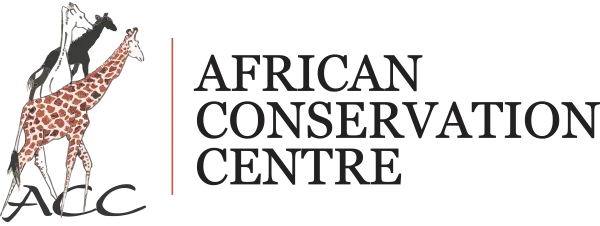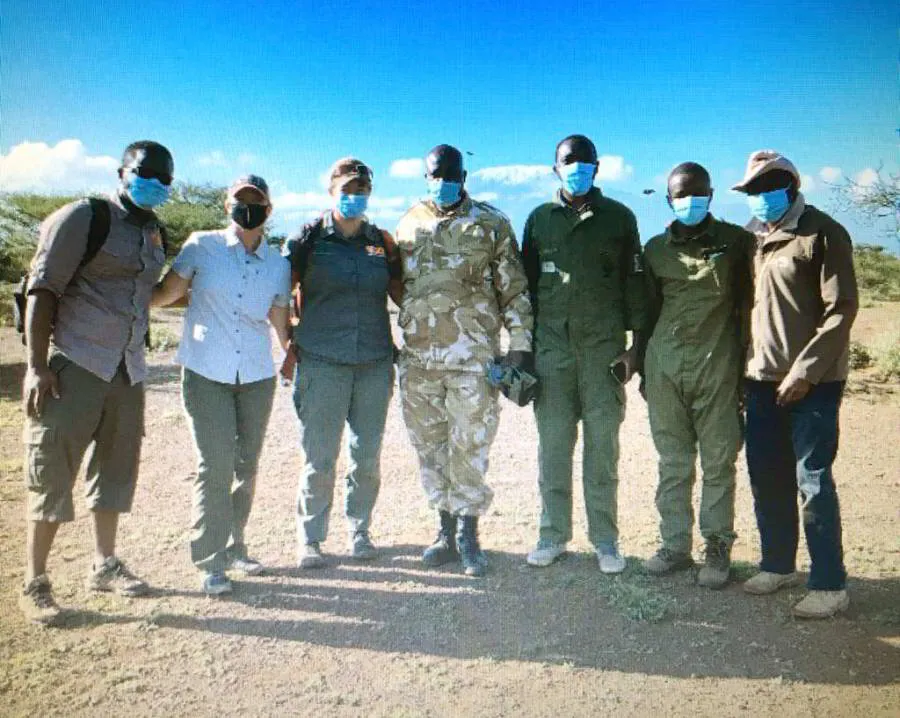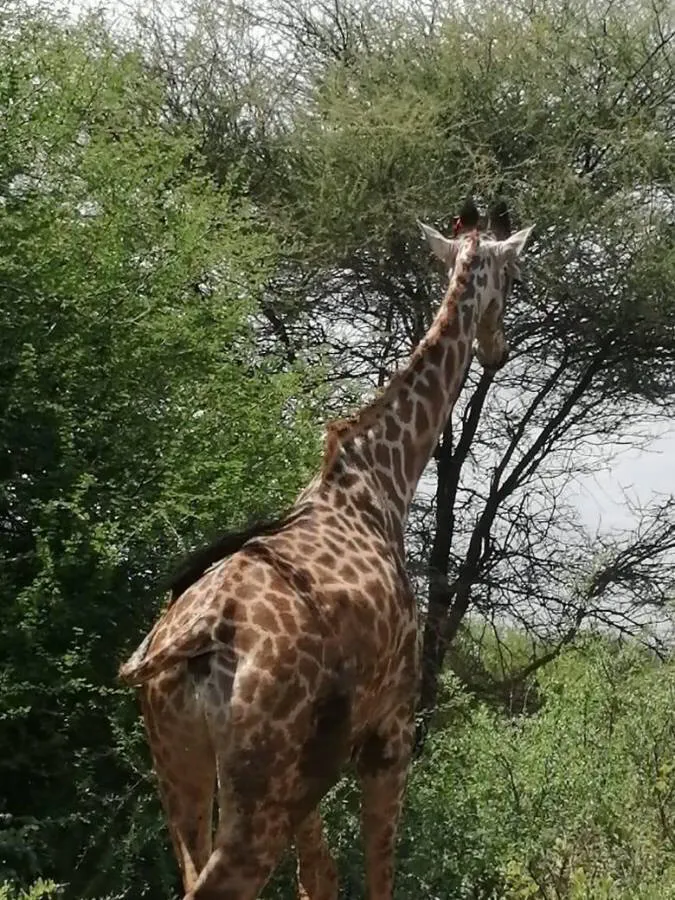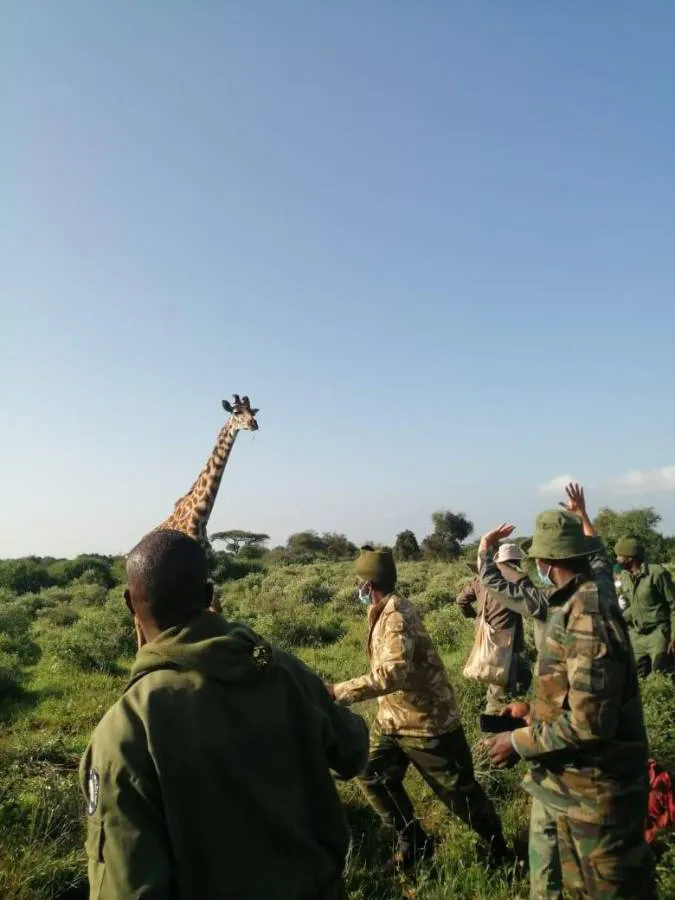01/01/2021 10:21 AM
ACC is leading an innovative research program with Maasai land associations, the Giraffe Conservation Foundation (GCF), the Kenya Wildlife Service (KWS), and other conservation partners that tracks endangered Maasai giraffes by satellite using solar-powered tracking units placed on the giraffes’ ossicones (horns), a process known as collaring. The project is made possible through funding from UNDP-GEF program.
Starting on December 11, 2020 and running the course of four days, a team of scientists from ACC, GCF, and KWS, along with chief guest, Kenya’s Cabinet Secretary for Tourism and Wildlife, Najib Balala, safely and successfully collared eight female sub-adult Maasai giraffes. Female giraffes were selected because they influence the movement of other giraffes in the ecosystem and rarely fight each other, unlike male giraffes whose battles for dominance could interfere with the GPS units.
Maasai Giraffe Research Team (left – Right): Arthur Muneza (gcf East Africa Coordinator), Dr. Brina Brunt, Dr. Sara Ferguson, Senior Sergeant Lelimo, Dr. Bernard Rono, Kws Intern, Dr. Edward Kariuki (kws Vet In Charge Of Amboseli Ecosystem)
Though Amboseli’s Maasai giraffe population has made a hopeful resurgence, the Maasai giraffe population overall has declined by 40 percent in the last three decades. In July 2019, the Maasai giraffe was added to the International Union for Conservation of Nature’s Endangered Species list and the Convention on International Trade in Endangered Species (CITES) passed strict regulations on the trading of giraffe parts.
The collected data will provide a detailed picture of the Maasai giraffes’ movements and behavior patterns, allowing scientists to create data-driven plans that mitigate the impacts of poaching (for meat, bones and hides), land subdivision, and infrastructure development, as well as protect the giraffes’ habitat along with that of other wildlife. This is a vital first-step in the conservation of this majestic animal—a keystone species in East Africa’s ecosystems.



